 I love this analogy and just had to share it with you as I think it describes writing a book perfectly.
I love this analogy and just had to share it with you as I think it describes writing a book perfectly.
Imagine that your story is a ship preparing to take off for a journey to the moon. This particular trip has three distinct parts analogous to the beginning, middle and end; the movement through the Earth’s atmosphere, the travel across open space and finally landing on the moon.
Your spaceship- your story- cannot travel out of the Earth’s atmosphere to its final destination if the booster rockets are not powerful enough to thrust it beyond the planet’s gravitational pull. In fact, if your booster rockets fail, your spaceship will fall back to earth and burn into embers.
Think of your opening, your exciting force, as your booster rockets. They construct your story accordingly, keep in mind the following six essentials when you create your opening paragraphs you can use one or two of these techniques, or you can use all of them. The choice is up to you.
So how can I begin a good story?
Use these six considerations for the opening strategy
- Give the reader a sense of what the book is about. In the beginning, the author presents a contract to the reader, letting them know what kind of book they are going to read.
- Uncover a problem. Some of state the problem right away others hinted it. Either way, the reader can get a good sense of what conflict might be.
At the picture book level, Maurice Sendak accomplished his goal in Where the Wild Things Are. The night Max wore his wolf suit and made mischief of one kind or another… It was sent to bed without eating anything.
The problem here is that a boy is making mischief and talking back to his mother. We know he’s going to pay a price for his behavior. Not sure yet what that price will be, but we do know the story will continue beyond this immediate consequence of getting sent to bed without the supper. The reader naturally wants to discover what’s going to happen next.
- Reveal character. Sometimes revelation is accompanied in a subtle way with the all the hinting at the kind of kid the hero is. Other times their emotional state of the protagonist is apparent from the opening sentence.
In J. D. Salinger’s The Catcher in the Rye. Holden Caulfield, the adolescent hero, begins his story with:
If you really want to hear about it, the first thing you’ll probably want to know is where I was born, and what my lousy childhood was like, and how my parents were occupied and all before they had me, and all that David Copperfield kind of crap, but I don’t feel like going into it, if you want to know the truth.
This is a kid with a powerful voice. These tough resentful and thinks he’s smart enough to know what the reader really wants. He’s also filled with the side and naked anger. This is a hero who was railing against the world a hero teenager can relate to.
- Pose a question to the reader. All written skillfully, creating implicit questions is a technique guaranteed to hook the reader.
In Ellen Foster, a crossover novel for teenagers and adults, Kaye Gibbons opens her story with:
When I was little I would think of ways to kill my dad. I would figure out this or that way and run it down through my head until it got easy.
The way I liked best was letting go of poisonous spider in his bed.
What questions are posed here? The first question that springs to mind is, why does this little girl want to kill her father? But is it done that was horrible enough to make her want to kill him? Does the girl succeed in killing her father? These questions create a powerful engine that drives the book and immediately hook the reader.
- Hint at the conflict to come. Conflict is the engine that drives stories. Conflict can be comical or dramatic, scary or tragic. If the character doesn’t confront and cope with conflict, she can’t grow or change. Without this transformation, the character isn’t interesting to read about.
- Anchor the story in time and space. From the beginning, readers not only like to know what the stories about, they like to know where it takes place in the water. Of time in history.
The beginning continued…
Somehow you’ve got to propel the action forward by moving the exciting force onto center stage. You got to catch the reader and pull her into the story. You got to hold her hand so tight, entangling her so skillfully in the lives of the characters that she won’t want to let go.

